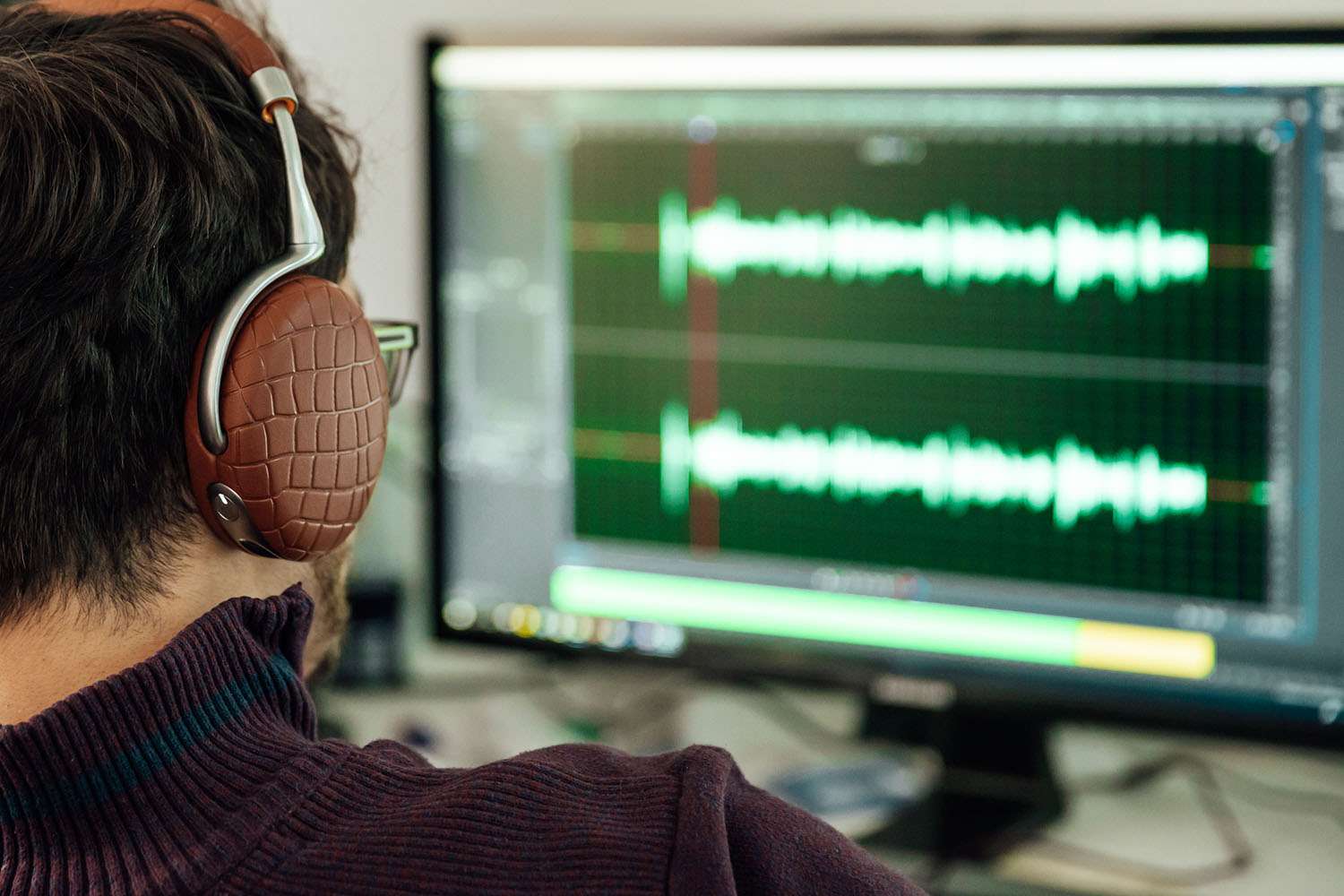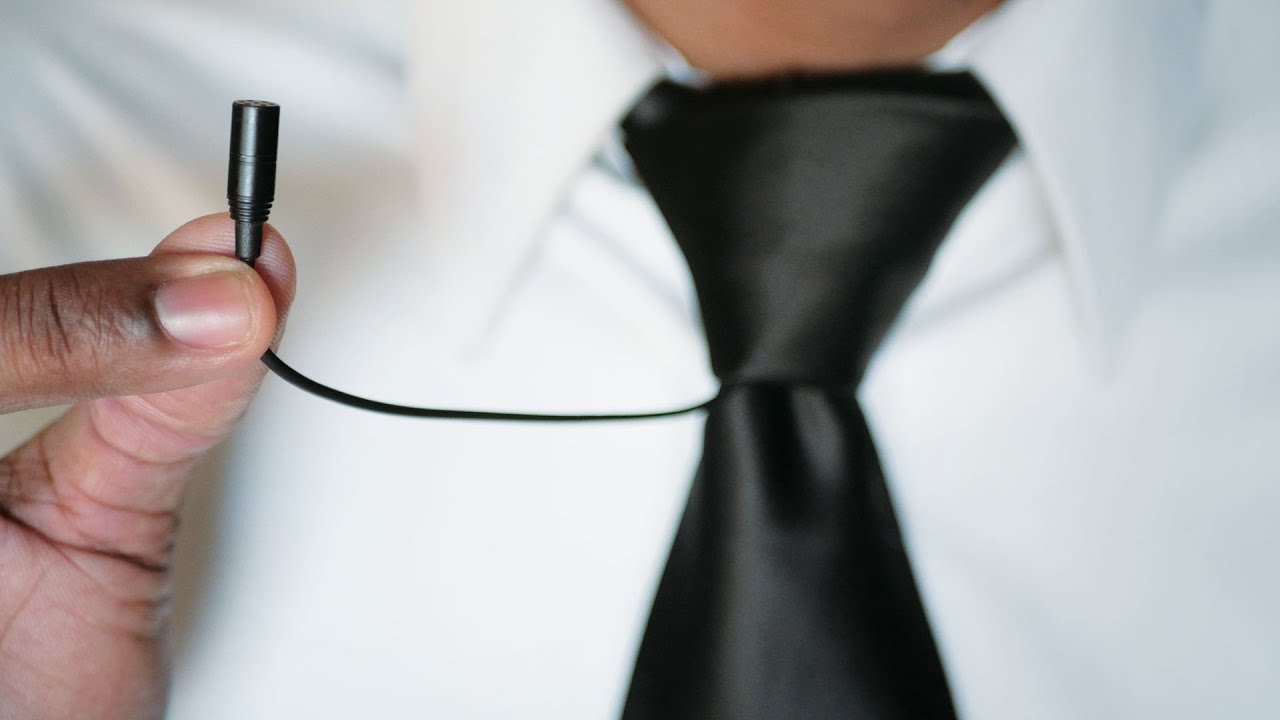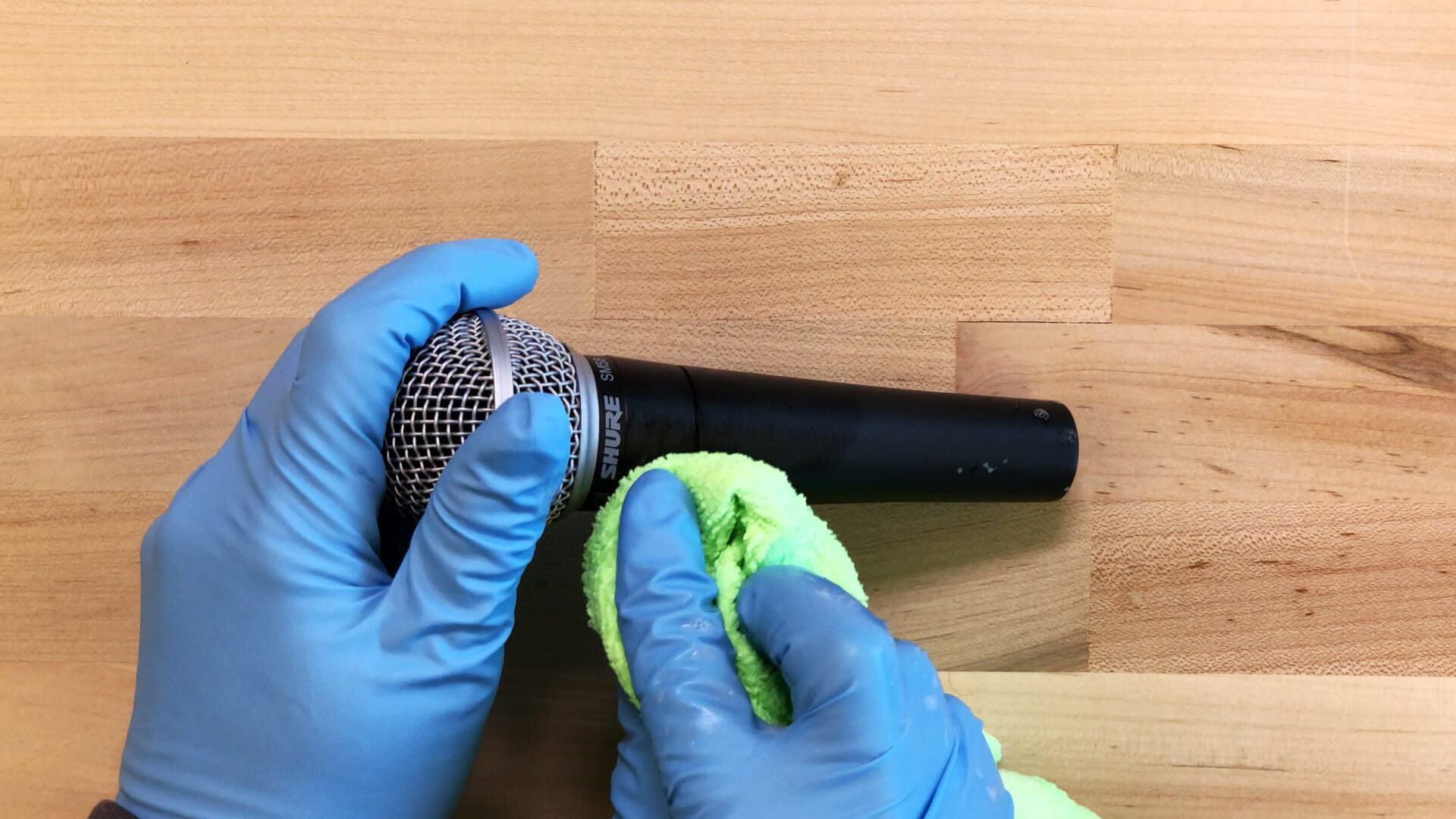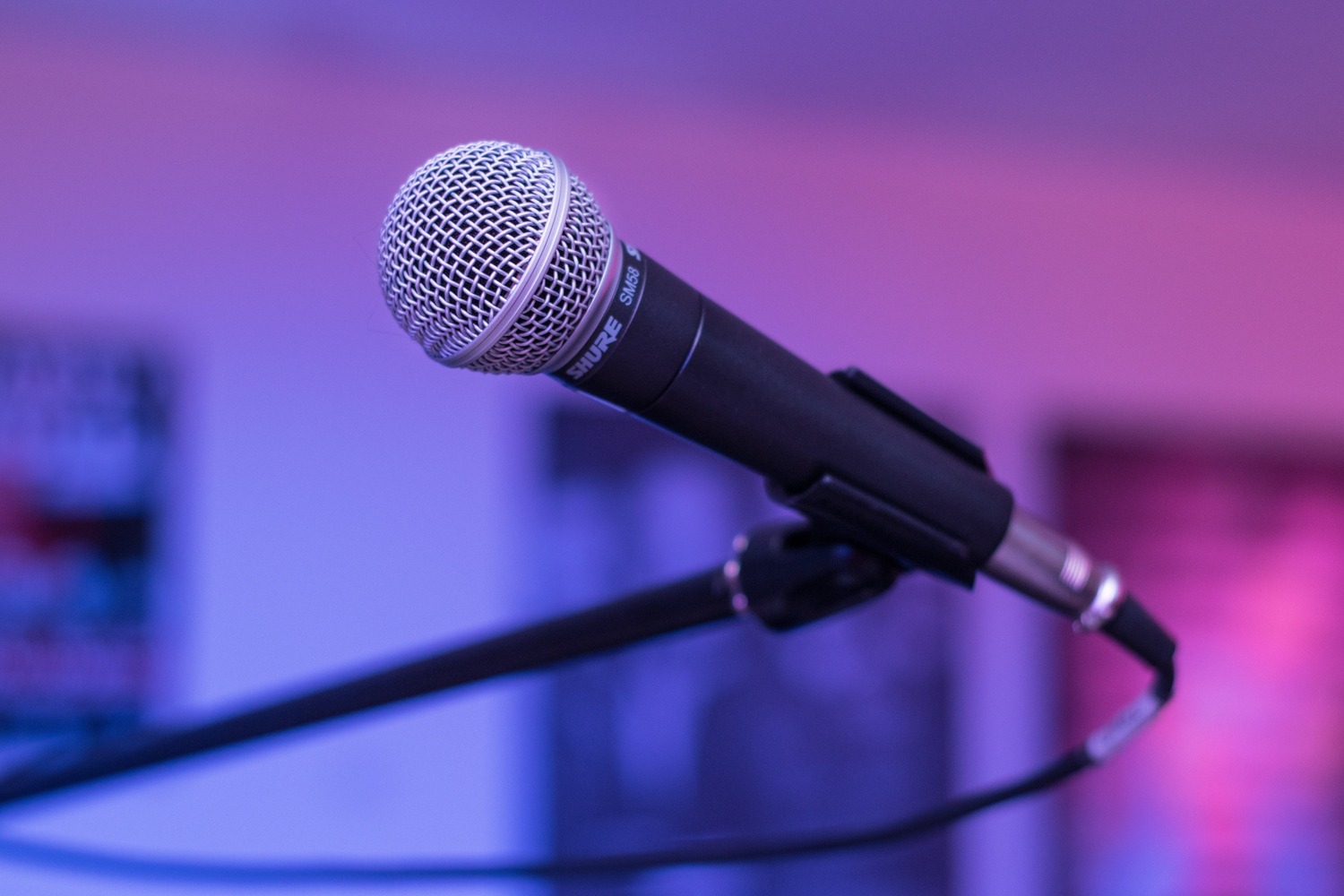Home>Devices & Equipment>Microphone>How To Lower Microphone Sensitivity


Microphone
How To Lower Microphone Sensitivity
Published: February 17, 2024
Learn how to lower microphone sensitivity for better audio quality. Follow these tips to adjust your microphone settings and reduce background noise. Improve your sound recording experience now!
(Many of the links in this article redirect to a specific reviewed product. Your purchase of these products through affiliate links helps to generate commission for AudioLover.com, at no extra cost. Learn more)
Table of Contents
Introduction
Understanding Microphone Sensitivity
Microphone sensitivity refers to the level of sound a microphone can pick up from its surrounding environment. A highly sensitive microphone can capture even the faintest of sounds, while a less sensitive one may require louder sounds to register. Understanding and effectively managing microphone sensitivity is crucial for achieving optimal audio quality in various settings, such as recording studios, live performances, conference calls, and gaming.
In this comprehensive guide, we will delve into the nuances of microphone sensitivity, exploring how it impacts audio capture and the methods for adjusting sensitivity levels across different platforms. Whether you're a content creator, a professional musician, or an individual seeking to enhance your communication experience, mastering microphone sensitivity can significantly elevate the quality of your audio recordings and interactions.
Throughout this article, we will provide step-by-step instructions for adjusting microphone sensitivity on Windows, Mac, and mobile devices. Additionally, we will offer practical tips for lowering microphone sensitivity effectively. By the end of this guide, you will have gained valuable insights into optimizing microphone sensitivity to suit your specific needs and preferences.
Let's embark on this illuminating journey to unravel the intricacies of microphone sensitivity and equip ourselves with the knowledge and techniques to harness its potential for superior audio performance.
Understanding Microphone Sensitivity
Microphone sensitivity, also known as mic sensitivity, plays a pivotal role in determining the quality and clarity of audio recordings. It represents the microphone’s ability to capture sound waves and convert them into electrical signals. This fundamental characteristic directly influences the microphone’s responsiveness to different sound levels, ultimately shaping the overall audio output.
The sensitivity of a microphone is typically measured in decibels (dB) and indicates how effectively the device can pick up sound. A higher sensitivity rating implies that the microphone can capture even the subtlest sounds, making it suitable for recording delicate acoustic performances or capturing ambient noises. Conversely, a lower sensitivity rating indicates that the microphone requires louder sound levels to register, making it more suitable for minimizing background noise in a noisy environment.
Microphone sensitivity is a crucial consideration in various scenarios. For instance, in a professional recording studio, a highly sensitive microphone is favored for capturing intricate musical details and vocal nuances with exceptional clarity. On the other hand, in a live event or public speaking engagement, a microphone with lower sensitivity can help mitigate the impact of ambient noise and prevent feedback issues.
Understanding the implications of microphone sensitivity empowers individuals to make informed decisions when selecting a microphone for specific applications. Moreover, it enables users to optimize their existing microphones by adjusting sensitivity settings to align with their recording or communication requirements. Whether it’s minimizing background noise during a video conference or enhancing the fidelity of a podcast recording, a nuanced understanding of microphone sensitivity is instrumental in achieving desired audio outcomes.
As we proceed, we will explore the practical methods for adjusting microphone sensitivity on Windows, Mac, and mobile devices, catering to diverse user preferences and technological ecosystems. By mastering the art of managing microphone sensitivity, individuals can elevate their audio experiences and unlock the full potential of their recording and communication endeavors.
Adjusting Microphone Sensitivity on Windows
Windows operating systems offer a range of options for adjusting microphone sensitivity, empowering users to customize their audio input settings based on their specific needs. Whether you’re aiming to reduce background noise during online meetings or fine-tune the microphone’s responsiveness for recording purposes, Windows provides intuitive controls for managing microphone sensitivity.
Using Sound Settings:
To adjust microphone sensitivity on Windows, begin by accessing the Sound settings. Right-click on the speaker icon in the system tray and select “Open Sound settings.” Under the “Input” section, you will find the connected microphone listed. Click on the microphone device to reveal additional settings.
Adjusting Input Level:
Once you’ve selected the microphone, you can modify its input level to regulate sensitivity. Drag the input level slider towards the left to decrease sensitivity, which can help in reducing background noise and minimizing the pickup of ambient sounds. Conversely, moving the slider towards the right increases sensitivity, allowing the microphone to capture more subtle sounds and nuances.
Using Device Properties:
Alternatively, you can fine-tune microphone sensitivity by accessing the device properties. Right-click on the speaker icon and choose “Open Sound settings,” then click on “Sound Control Panel” to access the recording tab. Right-click on the connected microphone and select “Properties.” Navigate to the “Levels” tab, where you can adjust the microphone’s sensitivity by modifying the input level slider.
Enhanced Control with Third-Party Software:
For advanced users and professionals seeking granular control over microphone sensitivity, third-party software solutions offer additional customization options. These applications provide extensive settings for adjusting sensitivity, noise reduction, and audio enhancements, allowing users to tailor their microphone’s performance to exact specifications.
By leveraging the diverse options available on Windows, users can effectively lower microphone sensitivity to suit specific recording or communication scenarios. Whether it’s refining audio quality for streaming, podcasting, or teleconferencing, the flexibility provided by Windows empowers individuals to optimize their microphone’s sensitivity with ease.
Adjusting Microphone Sensitivity on Mac
Mac systems offer intuitive controls for adjusting microphone sensitivity, enabling users to fine-tune audio input settings to meet their specific requirements. Whether you’re aiming to reduce ambient noise during voice calls or optimize the microphone’s responsiveness for recording purposes, Mac provides accessible options for managing microphone sensitivity.
Using System Preferences:
To adjust microphone sensitivity on a Mac, start by accessing the System Preferences. Click on the Apple logo in the top-left corner of the screen and select “System Preferences.” Within System Preferences, locate and click on “Sound” to access the audio settings panel. Navigate to the “Input” tab, where you will find the list of connected input devices, including microphones.
Adjusting Input Volume:
Once you’ve selected the microphone from the list of input devices, you can modify its input volume to regulate sensitivity. Drag the input volume slider to the left to decrease sensitivity, which can help minimize the pickup of ambient sounds and background noise. Conversely, moving the slider to the right increases sensitivity, allowing the microphone to capture softer sounds with greater clarity.
Using Audio MIDI Setup:
For more advanced adjustments, Mac users can utilize the Audio MIDI Setup utility to fine-tune microphone sensitivity. This application provides detailed controls for managing audio input and output devices, offering additional customization options beyond the standard settings available in System Preferences. Within Audio MIDI Setup, users can adjust input levels and configure advanced audio settings to optimize microphone performance.
Third-Party Applications:
For users seeking enhanced control and specialized features for managing microphone sensitivity on Mac, third-party applications and audio utilities can provide advanced customization options. These software solutions offer comprehensive settings for adjusting sensitivity, noise reduction, and audio enhancements, catering to the diverse needs of content creators, musicians, and professionals requiring precise control over audio input.
By leveraging the configurable options offered by Mac systems, users can effectively lower microphone sensitivity to align with specific recording, communication, and performance requirements. Whether it’s refining audio quality for podcasting, music production, or video conferencing, Mac empowers individuals to optimize their microphone’s sensitivity with ease and precision.
Adjusting Microphone Sensitivity on Mobile Devices
Mobile devices, including smartphones and tablets, provide users with the flexibility to adjust microphone sensitivity, allowing for personalized audio input management on the go. Whether you’re recording audio, engaging in voice calls, or participating in video conferences, the ability to fine-tune microphone sensitivity on mobile devices is invaluable for optimizing audio quality in diverse scenarios.
Using System Settings:
On both iOS and Android devices, adjusting microphone sensitivity typically involves accessing system settings related to audio and input preferences. For iOS devices, navigate to “Settings,” select “Sound & Haptics,” and tap on “Input” or “Microphone” settings to adjust sensitivity levels. On Android devices, access the “Settings” app, select “Sound,” “Audio settings,” or “Accessibility,” and locate the microphone settings to modify sensitivity.
Adjusting Input Gain:
Within the system settings, users can often find options to adjust input gain, which directly impacts microphone sensitivity. Lowering the input gain reduces sensitivity, making the microphone less responsive to softer sounds and ambient noise. Conversely, increasing the input gain enhances sensitivity, allowing the microphone to capture quieter sounds with greater clarity.
Using Third-Party Apps:
For more advanced control over microphone sensitivity on mobile devices, users can explore third-party apps designed to provide comprehensive audio input management. These apps offer features for adjusting sensitivity, noise reduction, and audio enhancement, catering to the needs of content creators, podcasters, and individuals seeking precise control over their mobile device’s microphone performance.
Utilizing Built-in Voice Assistants:
Some mobile devices feature built-in voice assistants that enable users to adjust microphone sensitivity through voice commands. By utilizing voice assistant functionalities, users can verbally instruct the device to lower or increase microphone sensitivity, streamlining the process of adjusting audio input settings while on the move.
With the diverse array of options available on mobile devices, users can seamlessly lower microphone sensitivity to align with specific recording, communication, and content creation needs. Whether it’s optimizing audio quality for mobile recordings, voice memos, or live streaming, the accessibility of microphone sensitivity controls on mobile devices empowers individuals to capture clear and precise audio in various environments.
Tips for Lowering Microphone Sensitivity
Lowering microphone sensitivity can significantly enhance the quality and clarity of audio recordings, especially in environments where ambient noise or unwanted background sounds may interfere with the desired audio capture. Whether you’re engaging in professional recordings, virtual meetings, or live performances, implementing the following tips can help optimize microphone sensitivity to achieve exceptional audio results:
Positioning and Distance:
Adjust the positioning and distance of the microphone to the sound source to effectively lower sensitivity. Placing the microphone closer to the sound source while reducing the input gain can help minimize the pickup of ambient noise, resulting in clearer audio recordings with reduced background interference.
Use of Pop Filters and Windscreens:
Employing pop filters and windscreens can mitigate the impact of plosive sounds and wind noise, contributing to a reduction in unwanted audio artifacts. These accessories act as barriers to disruptive airflow and can aid in lowering sensitivity by preventing the microphone from capturing undesirable environmental sounds.
Acoustic Treatment:
Implementing acoustic treatment in recording spaces can help minimize reverberations and external noises, contributing to a controlled acoustic environment. By reducing ambient noise and reflections, acoustic treatment supports the effective lowering of microphone sensitivity, resulting in cleaner audio recordings with improved signal-to-noise ratios.
Utilize Noise Gate Effects:
Explore the use of noise gate effects in audio production software or hardware. A noise gate allows users to set a threshold below which the microphone’s sensitivity is reduced, effectively muting or attenuating background noise during silent intervals while preserving the clarity of desired audio signals when they exceed the threshold.
Employ Dynamic Microphones:
Consider using dynamic microphones, which are inherently less sensitive to ambient noise compared to condenser microphones. Dynamic microphones are well-suited for live performances and environments with high sound pressure levels, offering robustness and the ability to lower sensitivity without compromising audio fidelity.
Optimize Digital Audio Workstation Settings:
When working with digital audio workstations (DAWs), explore the software settings to adjust input gain, apply noise reduction plugins, and utilize equalization to refine the audio input. By optimizing DAW settings, users can effectively lower microphone sensitivity while maintaining the integrity of the desired audio signals.
By implementing these tips, individuals can successfully lower microphone sensitivity to achieve pristine audio recordings, minimize background noise during communications, and optimize audio input for diverse applications. These strategies empower users to harness the full potential of their microphones, ensuring exceptional audio quality in various recording and communication endeavors.
Conclusion
Mastering the art of adjusting microphone sensitivity is pivotal in achieving optimal audio quality across a spectrum of recording and communication scenarios. Whether it’s refining audio capture for professional recordings, virtual meetings, live performances, or mobile content creation, the ability to lower microphone sensitivity empowers individuals to attain pristine and immersive audio experiences.
By understanding the nuances of microphone sensitivity and leveraging the diverse controls available on Windows, Mac, and mobile devices, users can tailor their audio input settings to suit specific preferences and environmental conditions. From adjusting input levels to exploring third-party software solutions, the flexibility offered by these platforms enables users to fine-tune microphone sensitivity with precision and ease.
Furthermore, the implementation of practical tips, such as optimizing microphone positioning, utilizing accessories like pop filters, and leveraging noise gate effects, amplifies the impact of lowering microphone sensitivity, resulting in enhanced audio clarity and reduced background interference. These strategies empower individuals to capture audio with exceptional fidelity, ensuring that the intended sounds are faithfully reproduced while minimizing the impact of unwanted ambient noise.
As technology continues to evolve, the management of microphone sensitivity remains a fundamental aspect of audio production and communication. Whether in professional studios, home recording setups, or mobile environments, the ability to lower microphone sensitivity equips individuals with the tools to curate immersive sonic experiences and elevate the quality of their audio content.
In conclusion, the journey of mastering microphone sensitivity is a dynamic and rewarding pursuit, offering individuals the means to sculpt and refine audio with precision and artistry. By embracing the knowledge and techniques shared in this guide, users can unlock the full potential of their microphones, ultimately shaping captivating audio narratives and fostering seamless communication in an increasingly interconnected world.











